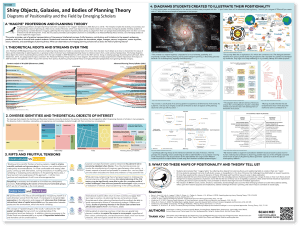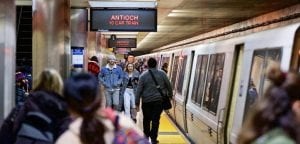Colloquium 1/27: James Eisenberg: Historic Reuse and Affordable Housing: Experiences of Urban American

Abstract:
In this presentation, URS and Baker alumnus James Eisenberg (B.S. URS ’96, M.P.S. RE ’02) shares what drove him to join Urban American, an industry-leading multifamily platform that is vertically integrated from property management to institutional-level asset and portfolio management. The company began with the desire to bring best-in-class operations and management to traditionally underserved communities in aging asset classes. Since 1997, Urban American has invested, owned, and operated more than 22,000 units of residential multifamily housing in the NYC and Denver metro areas as well as West Texas. Most of these projects have involved renovating and preserving prewar multifamily buildings. Eisenberg will share projects, including those in El Paso, Texas, and experiences working with diverse communities. CRP Professor Sara Bronin, a seventh-generation Texan who will imminently serve as President Biden’s appointed Chairman of the Advisory Council on Historic Preservation, will serve as a discussant for the presentation.
Please register here to attend the lecture via Zoom.
COSPONSORED WITH THE PAUL RUBACHA DEPARTMENT OF REAL ESTATE
Alumni & Internship Spotlight: Chasidy Miles (M.R.P/M.P.S. RE ’22)
Chasidy Miles, a former dual degree Master of Regional Planning and Master of Professional Studies in Real Estate student, credits her summer internship experience at Ivory Innovations for providing with her with valuable work experience and academic training to excel at opportunities in community development finance.
She was first introduced to Ivory Innovations, a nonprofit that promotes innovation in housing affordability, through their Hack-a-House competition where she won first place. Her victory opened the door for her to several companies and allowed her to apply her academic knowledge to real-world problems.
After interviewing with Ivory Innovations’ affiliate companies, Miles decided to work for Builders Patch who specializes in affordable multi-family housing deals from acquisition to asset management. Through this experience, she gained a strong understanding of the deal lifecycle and deep contextual knowledge of the daily pain points developers and lenders experience.
“Without Builders Patch, I would not have had the confidence, knowledge, and ability to stand out in interviews for community development finance.”
She credits the insight, friendships, and mentorship gained from her experience as a launch point for her career and hopes to continue this partnership with current Cornell M.R.P and M.P.S. RE students.
“I know there were several students from Baker and AAP that struggled to find paid internships this summer, so I’m hoping this will help bridge the gap for interested parties.”
For more information about Ivory Innovations please contact Jenna Louie at jenna@ivoryinnovations.org. To get in touch with Chasidy, please contact her at csm268@cornell.edu.
Graduate Students Win Best Poster Award at ACSP Annual Conference

The Association of Collegiate Schools of Planning (ACSP) held their Annual Conference in Toronto, Ontario from November 3-5, 2022. At the conference, Cornell University graduate students presented a posted that explored their intellectual journeys and reflections on planning theory.
The poster, titled “Shiny Objects, Galaxies, & Bodies of Planning Theory: Diagrams of Positionality and the Field by Emerging Scholars,” won the ACSP Conference’s Best Poster Award.
The poster creation was led by Yu Wang, and included contributions from co-authors Associate Professor Jennifer Minner, Courtney Bower, Natassia Bravo, Soojung Han, Laura Leddy, Yousuf Mahid, Antonio Moya-Latorre, Carlos Lopez Ortiz, Gina Yeonkyeong Park, Yating Ru, Andrea Urbina, and Zoe Zhuojun Wang.
The poster was a collaborative group project that grew out of CRP 8100: Seminar in Advanced Planning Theory. The graduate students, coming from the fields of City and Regional Planning, Regional Science, and Anthropology, developed the poster by creatively representing their own way of making sense of the universe of planning theories and their position within that body of theory.
Minner credits the diversity of interests and backgrounds for making in-class discussions a fascinating exchange of ideas and debates. Students engaged with what work planning theories do and how they give shape and depth to advanced social sciences-based scholarship in planning and its relevance to their own research directions.
The poster received overwhelming support and praise at the conference. Courtney Bower, a Regional Science Ph.D. student, was struck by how attendees responded to the poster.
“I think our work functioned as an invitation for several attendees to explore their positionality within planning or planning theory.”
A German professor has already expressed interest to use the diagram for their Ph.D. course this winter. Lead author, Yu Wang (M.S. RS ’23) hopes that the poster will continue to enlighten educators to think about more creative pedagogy.
The group has been working collaboratively on a follow up article and hopes to submit it over winter break.
Associate Professor Jeffrey Chusid Takes Inspiration from Joseph Allen Stein Following Successful Exhibition

Last month Associate Professor Jeffrey Chusid led a colloquium lecture, exhibition, and reception on renowned architect Joseph Allen Stein. The exhibition presented some 100 items from the more than 5,000 drawings and other materials from Stein’s personal archives that were given to the Cornell University Library.
The gift is an important addition to the library’s collections on modernist architecture and planning on South Asia. The documents will provide rich fodder for scholars of “the architecture of independence” period, from which the physical infrastructure for the modern Indian state was built.
“Creating the exhibition has not only allowed me to immerse myself in the wonderful materials being given to Cornell, but it also impelled me to explore important themes in Stein’s life and work,” said Chusid. These themes include Stein’s work in affordable housing and lightweight long-span structures, his role as an expatriate in a post-colonial state, and the relationship between architecture, institution building, and the politics of the Cold War.
Chusid, who is working on a book on the architect, feels inspired by Stein’s life story. In Stein’s 40+ years in India, he managed to convert from an outsider into something more respected and central to the conversation about architecture and planning. Several of his works, including the India International and India Habitat Centres have become monuments in New Delhi.
The exhibition captured different aspects of Stein’s life and work, including Chusid’s three favorite pieces: an architecture student journal from his time at the Bengal Engineering College in 1952 in which Stein introduces himself to his future homeland, a freehand perspective sketch of the India International Centre, c.1959, on which Stein wrote a brief essay about the meaning of architecture, and a series of beautiful and rigorous hand-drawn light studies for the façade of the India Habitat Centre from 1988.
“He was a deeply ethical individual—passionate about architecture and its ability to improve lives, while eschewing formalism or high style—who aspired to be good and modest as a person, and as an architect.”
Click here to view more images from the exhibition.
Colloquium 11/11: Zakhary Mallett: Inequitable Inefficiency: A Case Study of Rail Transit Fare Policies

Abstract:
Research on transit fare equity often includes a calculation of disparity in the fare per mile paid by different groups of riders. This cost-benefit measurement overlooks the cost-sharing nature of transit; as more riders consume a service, the average cost per rider declines. Using an average cost per rider metric to assign trip costs, and origin-destination fare data to estimate cost recovery through fares, I estimate the spatial and temporal variability of cost recovery across two rail systems, BART and MARTA. I find that cost recovery patterns are spatially monocentric and that the weekday peak period recovers more of its costs through fares than other time periods. I offer ideas on why these findings appear divergent to past research.
Bio:
Zakhary Mallett is the inaugural Strauch Fellow in the Department of City and Regional Planning at Cornell University’s College of Architecture, Art, and Planning. His research focuses on the interaction between transportation finance, travel behavior, and urban form. That is, to what extent are travel behaviors and the built environment — and the myriad of contemporary planning issues surrounding these — influenced by the inefficiency of how transportation is financed?
Prior to his academic career, Mallett was an elected member of the governing board of the San Francisco Bay Area Rapid Transit District (BART), where he served for four years and advocated for policies to be based on empirical findings and conscious of long-term financial impacts.
Mallett received his Ph.D. in Urban Planning and Development from the University of Southern California; Master of City Planning from the University of California, Berkeley; and bachelor’s degree from Stanford University.
Please register here to attend the lecture via Zoom.
SPONSORED BY THE BEYER MEMORIAL LECTURE